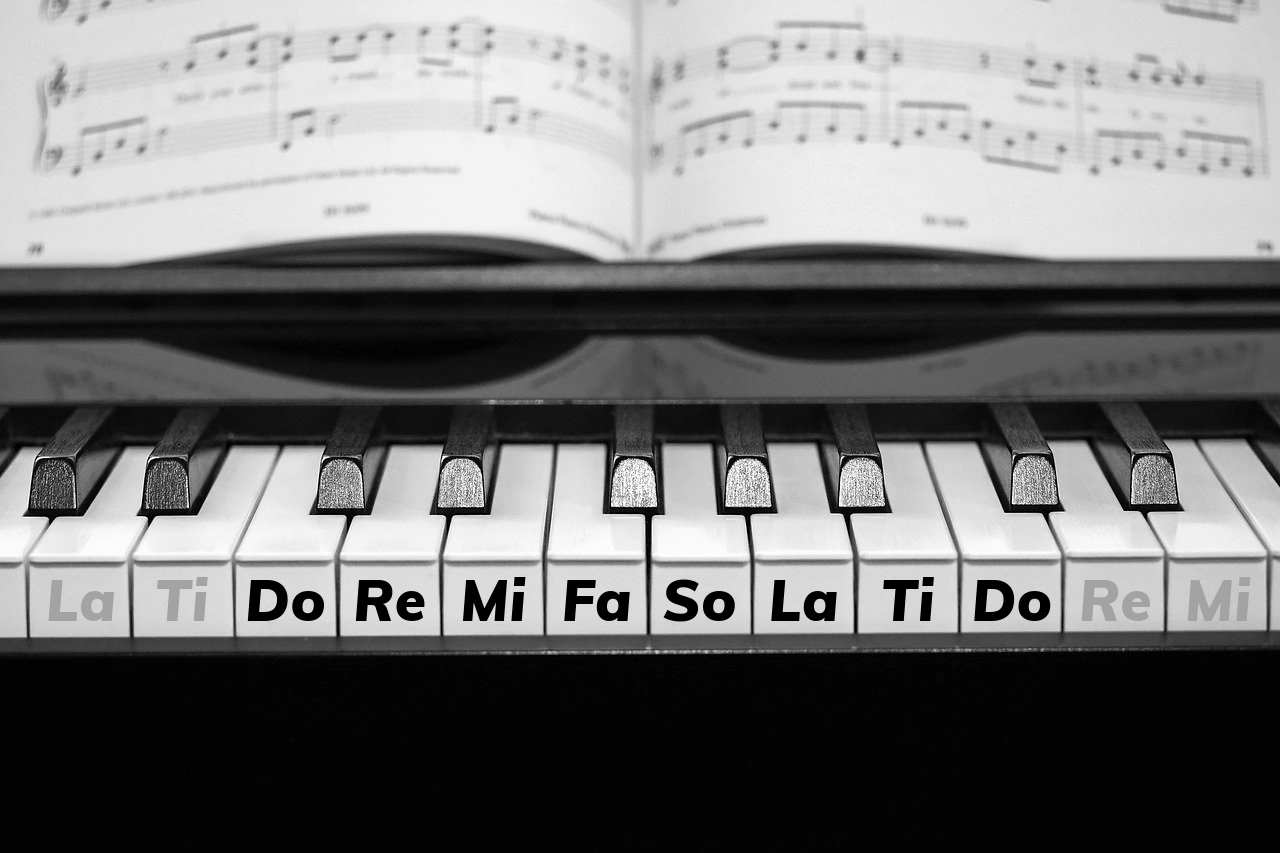If you are new to music, we highly recommend reading our blog post Music Theory Basics first.
Solfege and Its Benefits
Solfege is the French word for a music education method that teaches skills such as ear training, tone, and reading music by sight in Western music. This conventional method may have other names, such as solfeggio (sol-fa, solfa, solfeo).
Using solfege during lessons and practice time has several benefits. These include developing relative pitch, sight-sing, and a stronger musical memory. With these skills more developed, you can strengthen your voice and bring your talent close to the surface.
The Basic Solfege Syllables
The solfege system has a specific symbol for every note on a scale. For example, if we look at the C major scale, we will see a certain group of notes played in this sequence: C, D, E, F, G, A, B, C. The syllables used to sing and write the notes of a major scale in solfege are:
| Syllable | Pronounced | Note |
|---|---|---|
| Do | doh | C |
| Re | ray | D |
| Mi | me | E |
| Fa | fah | F |
| Sol | so | G |
| La | lah | A |
| Ti | tee | B |
| Do | doh | C |
You can sing the major scale in solfege, ascending and descending, using a fixed or movable do. Learning the difference between these two concepts is crucial to note reading.
Our app allows you to customize your experience. You can select the key, scale, and syllables of your choice. You can learn more about the app in our “Using the App” lesson.
Movable Do vs Fixed Do
Solfege has two ways of matching syllables to notes: Movable Do and Fixed Do.
In a movable Do way, the first note of the scale gets the syllable ‘Do’, no matter what the key is. The other notes of the scale get the other syllables. This way helps to develop relative pitch and is common in English-speaking countries.
In a fixed Do way, note C always gets the syllable ‘Do’, regardless of the key. The other notes of the chromatic scale get the other syllables. This way helps to achieve perfect pitch and is often found more commonly used in Romance languages.
Examples of Songs Using Solfege in the Major Scale
Many popular songs use the major scale and solfege syllables. Below are some examples of songs that use the major scale which you probably will recognize from your childhood.
You can sing these songs using solfege syllables, improving your ear training and sight-singing skills. Sing them with a fixed or movable do and notice how the syllables differ.
“Do-Re-Mi” from The Sound of Music
“Twinkle, Twinkle, Little Star”
More About Syllables
You might be wondering what to do if a note (sound) is between C and D, like C♯ or D♭. Well, we talk more about advanced solfege in our lesson Advance Solfege Syllables.
In the following section, we will show you three beginner exercises to get you started with solfege.
